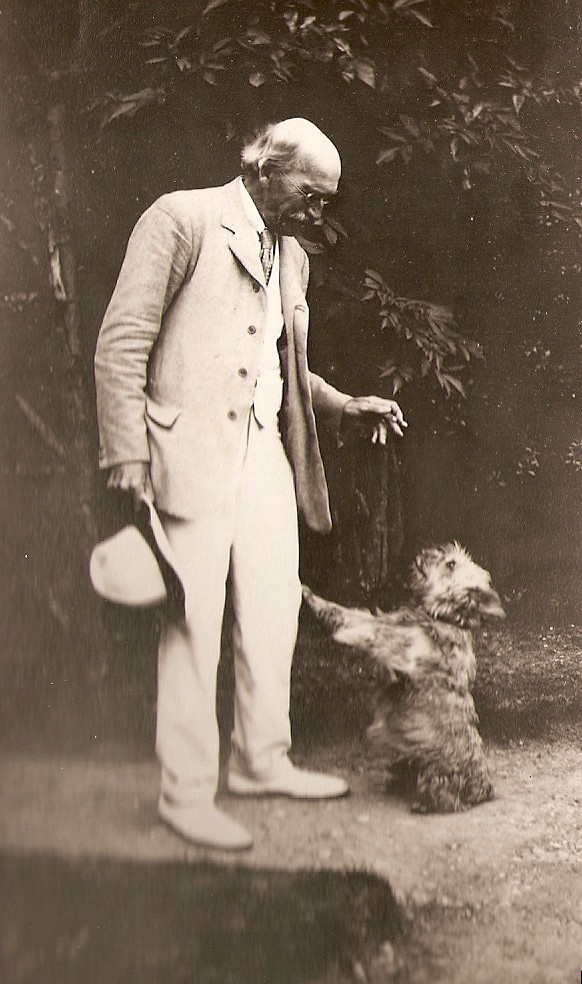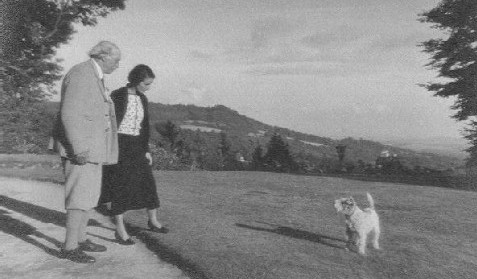Tobias Matthay (1858-1945)
 TOBIAS MATTHAY is one of the most controversial figures in twentieth-century piano pedagogy.
Glorified by some and villified by others, he left copious theoretical writings which today are little studied
by serious pianists and teachers. In 1922, Frederick Corder, a composition professor at London's Royal Academy
of Music, wrote that Matthay had revolutionized piano teaching and brought British pianism to new heights
internationally. By contrast, less than fifty years later, British composer and pianist Alan Bush declared that Matthay was "the ruination"
of pianism in England. And despite the fact that the American Matthay Association has flourished nearly continuously
since 1925, in 1963, Harold Schonberg, the chief music critic for the New York Times wrote approvingly that modern theorists
"ridicule" Matthay's antiquated ideas. Ironically, for his entire life, Matthay revered science and sought to apply the scientific
method to piano instruction, but after World War I, his ideas were repeatedly attacked as "unscientific."
TOBIAS MATTHAY is one of the most controversial figures in twentieth-century piano pedagogy.
Glorified by some and villified by others, he left copious theoretical writings which today are little studied
by serious pianists and teachers. In 1922, Frederick Corder, a composition professor at London's Royal Academy
of Music, wrote that Matthay had revolutionized piano teaching and brought British pianism to new heights
internationally. By contrast, less than fifty years later, British composer and pianist Alan Bush declared that Matthay was "the ruination"
of pianism in England. And despite the fact that the American Matthay Association has flourished nearly continuously
since 1925, in 1963, Harold Schonberg, the chief music critic for the New York Times wrote approvingly that modern theorists
"ridicule" Matthay's antiquated ideas. Ironically, for his entire life, Matthay revered science and sought to apply the scientific
method to piano instruction, but after World War I, his ideas were repeatedly attacked as "unscientific."
Born in Clapham,
Matthay entered London's Royal Academy of Music in 1871 at the age of thirteen, and eight months later, he received the first
scholarship given to honor the knighthood of its principal, Sir William Sterndale Bennett. Bennett, one of the most iconic figures
in nineteenth-century British music, became his first composition teacher, and when he died three years later, Matthay's instruction was
undertaken by Sir Arthur Sullivan, Bennett's most famous pupil. Matthay himself became an RAM professor in 1880, and within ten years
he was beginning to make his mark as a pedagogue with unorthodox ideas. He began to write extensively, articles at first,
and then his encyclopedic The Act of Touch, which appeared in 1903, and was viewed as revolutionary by many in the field.
Soon, Matthay had so many pupils that he had to open his own school, first at his home in Hampstead, then briefly on Oxford Street,
and by early 1909 at 96 Wimpole Street, where it remained for the next thirty years. At the same time, he and his wife, Jessie,
completed their dream home, a country retreat overlooking Marley Commons in Sussex, which he called High Marley.
After World War I, students from all corners of the globe began to flock to the Tobias Matthay Pianoforte School, and he was well
positioned to become the dominant figure in twentieth-century pedagogy. In 1922, after his pupil Myra Hess returned from a highly
successful tour of the United States, she was chosen to perform his own Piano
Concerto—with Matthay conducting—at the RAM Centennial Celebration in Queen's
Hall, to an audience of over 3,000 which included the King and Queen. But less than three years later, his theories were attacked in print by
the principal of the RAM—a former student and once-trusted friend—and he was forced to end his half-century association with the
institution he had once called "my musical mother." Nonetheless,
he continued to nurture major artists from both sides of the Atlantic. Matthay, who had once been close to Bennett and Sullivan,
was equally familiar with Boult and Beecham (who even married one of his students), and he maintained his productivity through
World War II, until he passed quietly, aged 87, at his beloved High Marley.
